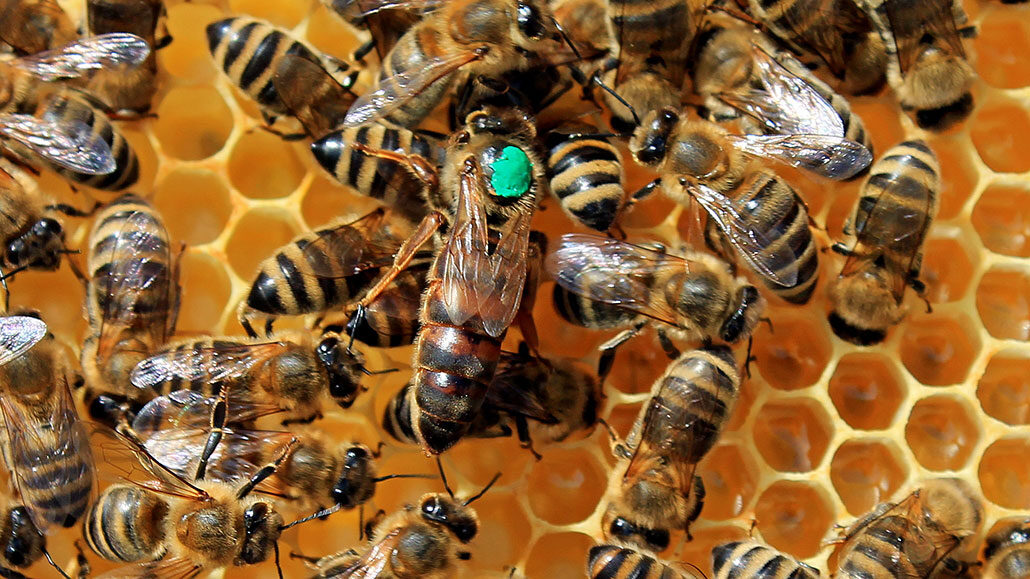Questions for “Quacks and toots help young honeybee queens avoid deadly duels”

A honeybee queen surrounded by her workers. Beekeepers will sometimes mark the queen with a dot (blue-green here) to make her easier to see.
Tatrano/iStock/Getty Images Plus